You’ve probably avoided granulation because it seems intimidating, but silver’s unique properties actually make it the perfect entry point for this ancient technique. Unlike gold or other metals, silver won’t punish your early mistakes with expensive failures or impossible-to-fix oxidation issues. Its affordable price point means you can practice repeatedly without breaking your budget, while its forgiving melting characteristics give you room to learn proper heat control before the real challenges begin.
Silver’s Affordability Makes Learning Accessible
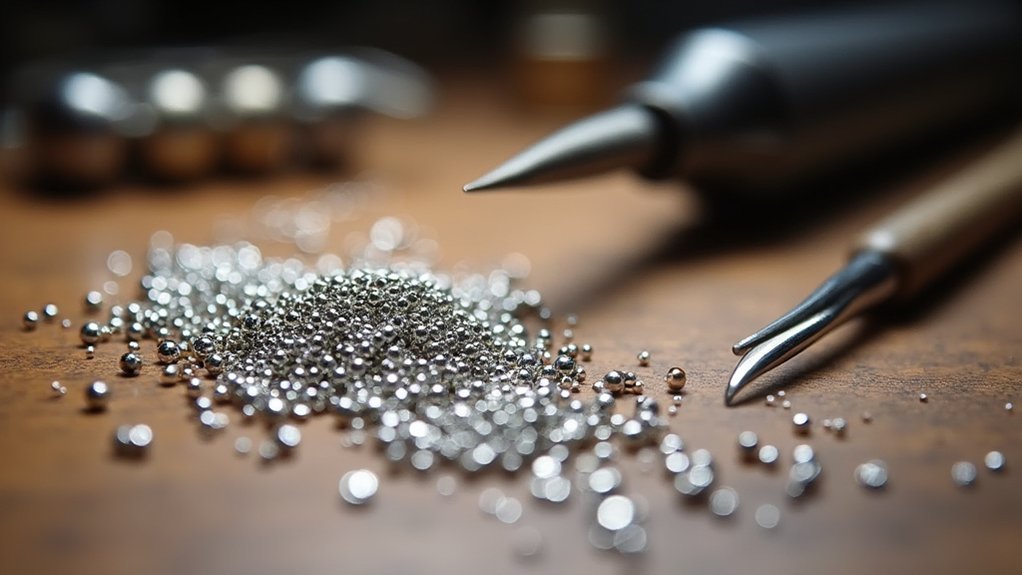
Budget constraints shouldn’t prevent you from mastering the ancient art of silver granulation.
Silver offers an affordable entry point for beginner jewelers who want to learn this sophisticated technique without breaking the bank. At $20 to $30 per ounce, sterling silver costs considerably less than gold, allowing you to purchase enough material for extensive practice sessions.
You’ll find silver readily available in various forms, including wire and sheet, making it easy to create those tiny granules essential for this decorative process.
The affordability factor means you can experiment freely, make mistakes, and refine your skills without worrying about wasting expensive materials.
This cost-effective approach builds confidence while developing the precision needed for granulation mastery.
Forgiving Material Properties for New Techniques
When you’re starting your granulation journey, silver’s forgiving material properties will become your best ally in mastering this intricate technique. Fine silver’s low melting point of 1761°F makes it ideal for beginners learning granulation fundamentals.
Silver’s forgiving properties and low melting point make it the perfect starting material for mastering granulation techniques.
You’ll appreciate how this forgiving nature allows successful fusing at lower temperatures, reducing your risk of overheating and damaging your work.
Unlike sterling silver, fine silver contains no copper, eliminating fire scale and oxidation issues that complicate learning. You can experiment confidently with silver granulation techniques, knowing the material allows for adjustments and corrections during your design process.
Consider Argentium silver as another beginner-friendly option—its germanium content provides enhanced fusing properties and a wider melting range, making your granulation attempts even more forgiving as you develop your skills.
Essential Tools and Equipment Overview
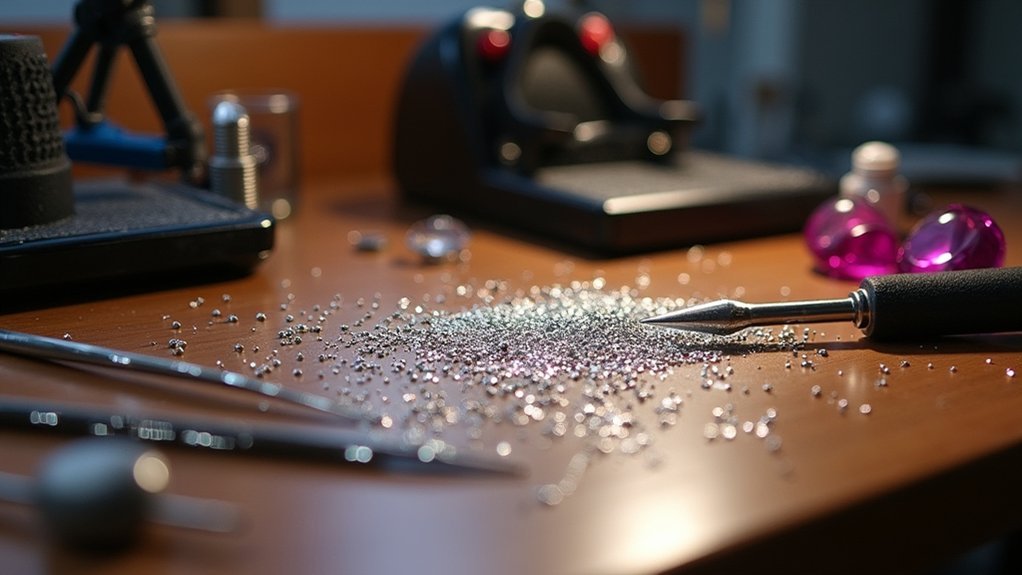
Now that you understand silver’s forgiving properties, you’ll need the right tools to transform this beginner-friendly material into beautiful granulated jewelry.
A charcoal block creates perfect granules when you heat 22-gauge sterling silver wire with an air/acetylene torch. Your measuring tools—ruler and permanent marker—ensure consistent granule sizes by helping you cut uniform wire segments.
Don’t skip safety gear: apron, glasses, and mask protect against heat and fumes.
Master the soldering technique using a soldering pick for precise granule placement. After creating granules using your torch, clean them in a pickle pot to remove oxidation.
Optional tools enhance your process: tweezers handle tiny granules easily, while sandpaper smooths one side, preventing rolling during soldering.
Step-by-Step Process Breakdown
Four essential stages transform silver wire into stunning granulated jewelry: preparation, melting, cleaning, and attachment.
You’ll start by cutting 22-gauge sterling silver wire into small pieces, then placing them in charcoal block holes. Using your torch, heat the pieces until they reach melting point – the technique of granulation requires precise temperature control as metal transforms into tiny spheres.
Allow 5-10 minutes for cooling after making granules. Next, clean your newly formed spheres in a pickle bath, avoiding steel tools that cause copper plating.
Patience during cooling prevents damage while proper pickle bath cleaning ensures pristine granules ready for attachment.
Finally, you’ll attach granules to your jewelry piece using flux and solder pallion. This careful heating guarantees proper adhesion without re-melting your granules, making jewelry making both sustainable and creative.
Common Mistakes and How to Avoid Them
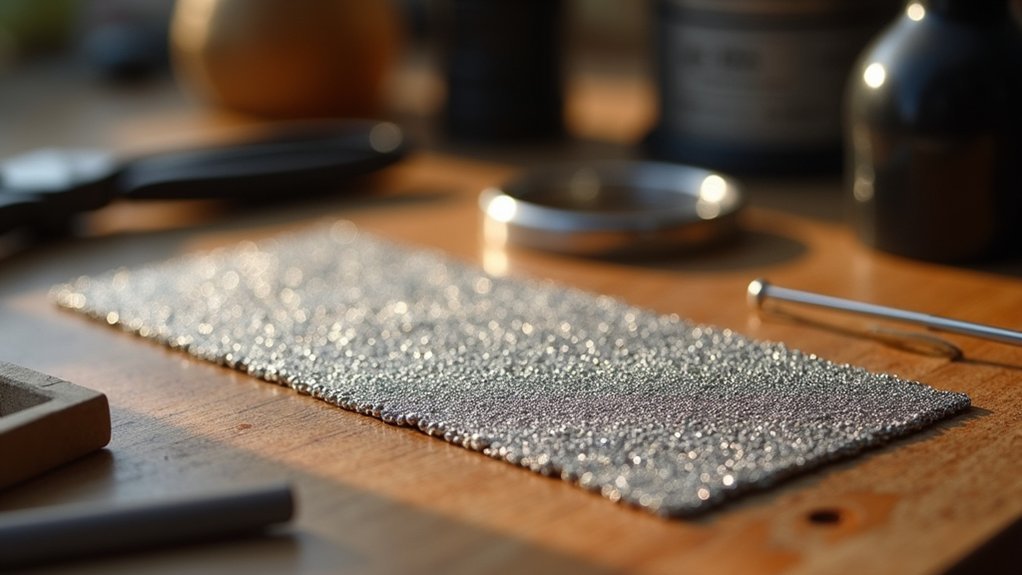
Even experienced metalworkers occasionally stumble when learning granulation, but you can sidestep the most common pitfalls with proper preparation and technique.
| Common Mistakes | Consequences | Prevention |
|---|---|---|
| Using wrong wire gauge | Inconsistent granule sizes | Use 22 gauge sterling silver wire |
| Dirty charcoal block | Contaminated granules | Clean block thoroughly before use |
| Overheating metal | Granules fuse together | Control torch precisely, monitor timing |
| Skipping pickling process | Poor adhesion during soldering | Clean granules in pickle bath |
| Using steel tongs | Copper plating contamination | Use non-reactive tools only |
These jewellery making mistakes can derail your granulation projects. Pay attention to wire selection, maintain clean equipment, and don’t rush the heating process. The pickling process removes oxidation that prevents proper bonding, while non-reactive tools preserve your sterling silver’s integrity throughout the entire process.
Building Skills for Advanced Granulation Methods
Once you’ve mastered the fundamental techniques outlined above, you’ll want to expand your skill set through deliberate practice with fine silver manipulation.
You’ll build confidence by experimenting with different sizes of granules, learning how heat control affects various scales of work. This foundation becomes invaluable when making a ring or crafting unique wedding rings that showcase your granulation expertise.
Using granulation techniques, you’ll discover whether you prefer silver or gold as your working medium.
Practice fusing versus soldering methods to identify your strengths and develop personal preferences. Your charcoal block work will prepare you for advanced tool usage, while community feedback accelerates your learning curve.
This progression enables you to create everything from classic to contemporary styles with professional precision.
Frequently Asked Questions
What Is the Granulation Technique of Jewellery?
You’ll create tiny metal spheres from melted scraps, then fuse them onto base pieces for decorative texture. This ancient technique, dating back 5,000 years, lets you craft intricate, personal designs using soldering or fusing methods.
Why Would a Jeweler Substitute Silver for Gold?
You’d substitute silver for gold because it’s much more affordable, allowing experimentation without major financial risk. Silver’s forgiving melting properties make it easier to work with while learning new techniques.
What Are the Techniques for Silver Granulation?
You’ll melt metal scraps into spheres using a torch on charcoal blocks, then attach them through soldering or fusing. Clean granules in pickle baths, and consider Argentium silver for easier temperature control.
What Are the Reason for Choosing Gold and Silver for Making Jewellery?
You’ll find gold and silver offer excellent malleability for intricate designs, natural durability against wear, affordable accessibility for learning, rich cultural significance, and versatility through alloying options that enhance your creative jewelry-making possibilities.
In Summary
You’ll find silver granulation opens doors to endless creative possibilities while building essential metalworking skills. As you master basic techniques, you’ll develop the confidence and expertise needed for advanced methods like gold granulation or mixed-metal designs. The affordable practice silver provides means you can experiment freely, refine your torch control, and perfect your timing without breaking the bank. Start with silver, and you’ll establish a solid foundation for your jewelry-making journey.

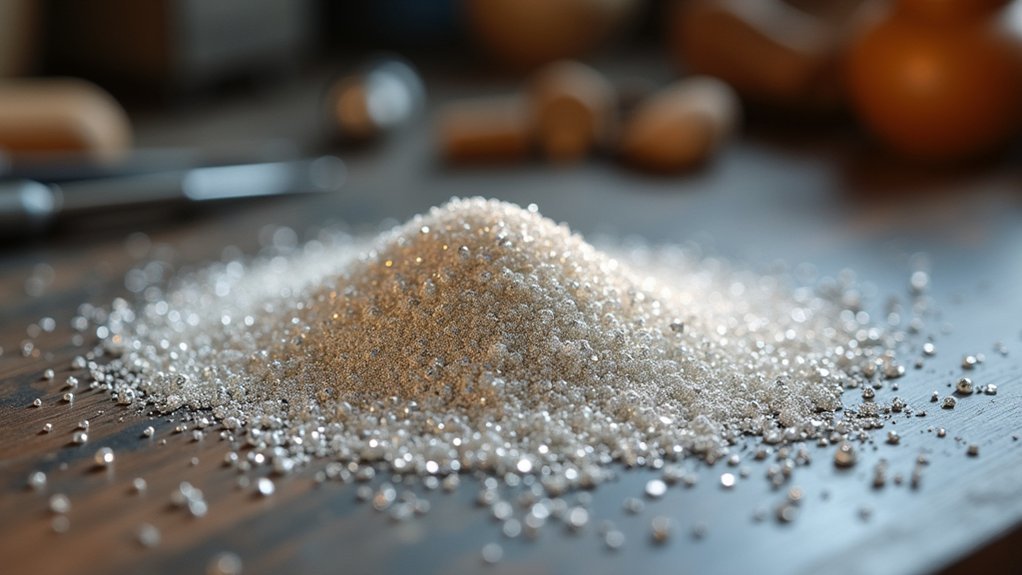
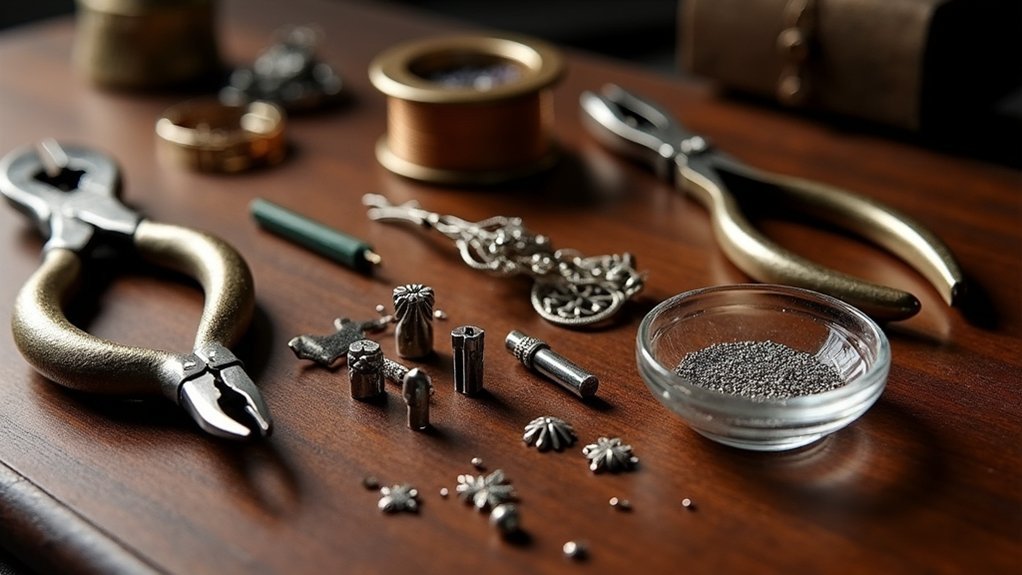
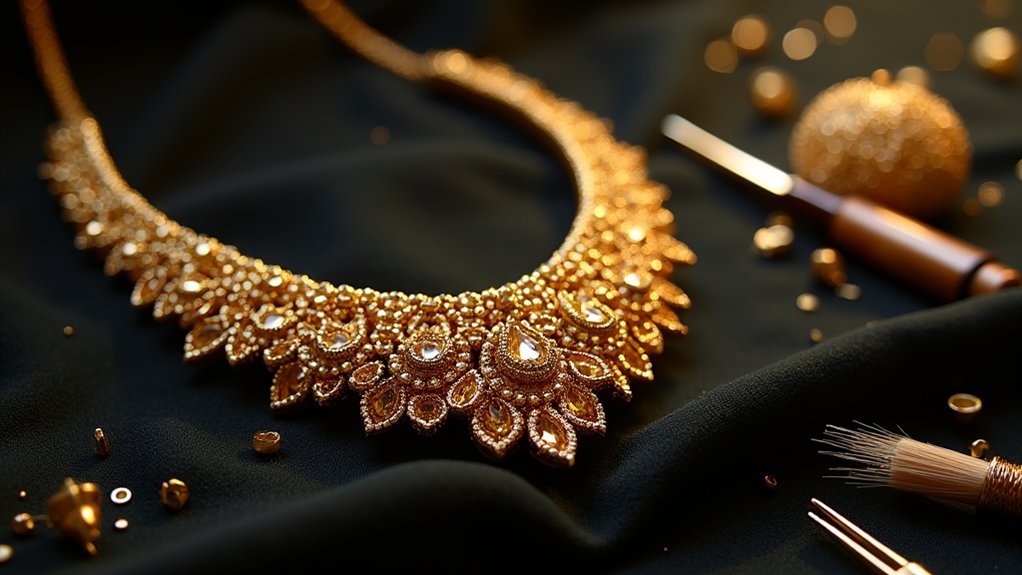
Leave a Reply